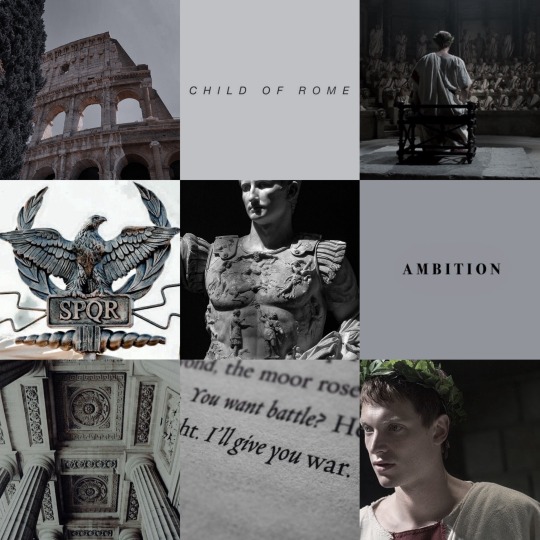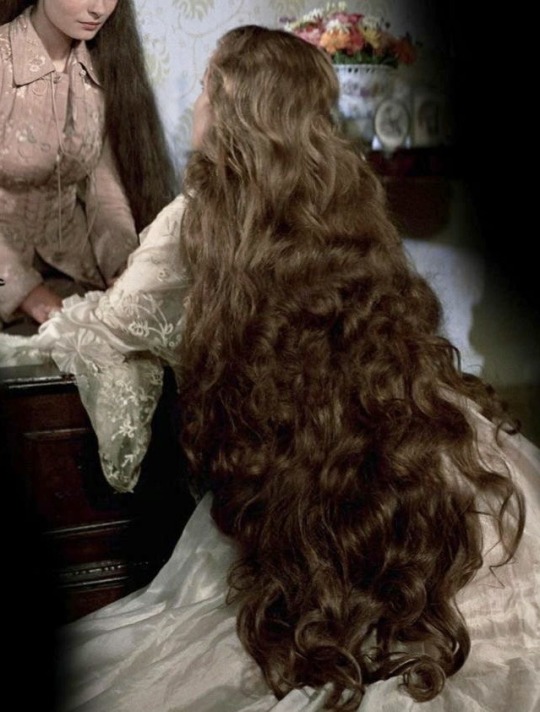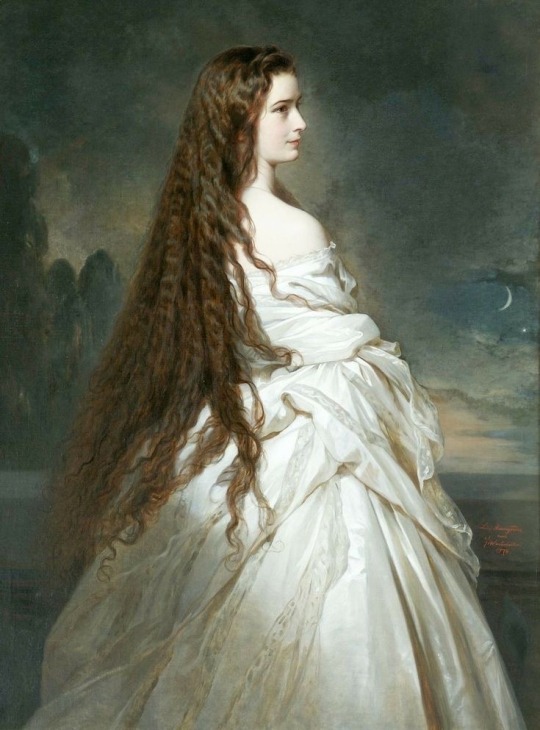#Classic Period
Explore tagged Tumblr posts
Text



Statue of "The Creator" from Xochicalco, Mexico dated between 650 - 900 on display at the National Museum of Anthropology in Mexico City, Mexico
Photographs taken by myself 2024
#art#archaeology#history#classic period#late antiquity#mexico#mexican#national museum of anthropology#mexico city#barbucomedie
1K notes
·
View notes
Text

Favourite Roman Emperors (2/5):
Octavian Augustus.
#moodboard#aesthetic#classic period#Ancient Rome#Rome#Roman empire#Roman emperor#Octavian#Gaius Octavius#Augustus#Octavius Augustus#spqr
35 notes
·
View notes
Text
Maya, Early Classic 300-400 CE 10.16 cm x 5.72 cm x 0.64 cm (4 in. x 2 1/4 in. x 1/4 in.) jadeite
A pendant that may have been worn as part of a Maya ruler’s belt assemblage, this jadeite belt plaque offers intriguing clues to the process of reworking objects for different purposes. In its original form, the piece was lightly incised with two hieroglyphs, which were carefully framed by a double cartouche. A hole for suspending the plaque slightly overlaps the outer cartouche, as if placed with no regard for the incised line. The line of the cartouche has also been ground away along the bottom of the plaque, which now shows a slightly beveled edge.
At some point in its history, the plaque was deliberately reshaped with grinding and cutting tools into a figural form. The object was inverted so that the ground “eyes” of the figure are located in the middle of the lower hieroglyph. The cut marks on each side and from the edge of the plaque to the suspension hole imply limbs, and these alterations may indicate that the object was recarved in the shape of an axe god, an ancient Costa Rican form. The cut that defines the legs does not extend all the way to the suspension hole, although cut marks are visible on either side of it.
A remarkable object in terms of its material and inscription, the Dumbarton Oaks plaque is particularly interesting in the context of changes in its meaning and function, evidenced in its modifications. These changes are especially intriguing because this work may have belonged to a set of six inscribed belt plaques. Three plaques, possibly from this set, were discovered in the Early Classic tomb at Calakmul. Together, glylphs on the six plaques would have formed a text—whose meaning was lost once the plaques went their separate ways. As this objetc was modified and reworked, its initial textual significance was apparently replaced by other narratives and symbolism related to its value as a precious gift and heirloom.

Belt Plaque
Maya, Early Classic, 300-400 CE
#history#clothing#jewellery#art#carving#languages#classic period#mesoamerica#maya#mexico#costa rica#campeche#calakmul#belts#jade#jadeite#maya hieroglyphs
1K notes
·
View notes
Text
the fact that shakespeare was a playwright is sometimes so funny to me. just the concept of the "greatest writer of the English language" being a random 450-year-old entertainer, a 16th cent pop cultural sensation (thanks in large part to puns & dirty jokes & verbiage & a long-running appeal to commoners). and his work was made to be watched not read, but in the classroom teachers just hand us his scripts and say "that's literature"
just...imagine it's 2450 A.D. and English Lit students are regularly going into 100k debt writing postdoc theses on The Simpsons screenplays. the original animation hasn't even been preserved, it's literally just scripts and the occasional SDH subtitles.txt. they've been republished more times than the Bible
#due to the Great Data Decay academics write viciously argumentative articles on which episodes aired in what order#at conferences professors have known to engage in physically violent altercations whilst debating the air date number of household viewers#90% of the couch gags have been lost and there is a billion dollar trade in counterfeit “lost copies”#serious note: i'll be honest i always assumed it was english imperialism that made shakespeare so inescapable in the 19th/20th cent#like his writing should have become obscure at the same level of his contemporaries#but british imperialists needed an ENGLISH LANGUAGE (and BRITISH) writer to venerate#and shakespeare wrote so many damn things that there was a humongous body of work just sitting there waiting to be culturally exploited...#i know it didn't happen like this but i imagine a English Parliament House Committee Member For The Education Of The Masses or something#cartoonishly stumbling over a dusty cobwebbed crate labelled the Complete Works of Shakespeare#and going 'Eureka! this shall make excellent propoganda for fabricating a national identity in a time of great social unrest.#it will be a cornerstone of our elitist educational institutions for centuries to come! long live our decaying empire!'#'what good fortune that this used to be accessible and entertaining to mainstream illiterate audience members...#..but now we can strip that away and make it a difficult & alienating foundation of a Classical Education! just like the latin language :)'#anyway maybe there's no such thing as the 'greatest writer of x language' in ANY language?#maybe there are just different styles and yes levels of expertise and skill but also a high degree of subjectivity#and variance in the way that we as individuals and members of different cultures/time periods experience any work of media#and that's okay! and should be acknowledged!!! and allow us to give ourselves permission to broaden our horizons#and explore the stories of marginalized/underappreciated creators#instead of worshiping the List of Top 10 Best (aka Most Famous) Whatevers Of All Time/A Certain Time Period#anyways things are famous for a reason and that reason has little to do with innate “value”#and much more to do with how it plays into the interests of powerful institutions motivated to influence our shared cultural narratives#so i'm not saying 'stop teaching shakespeare'. but like...maybe classrooms should stop using it as busy work that (by accident or designs)#happens to alienate a large number of students who could otherwise be engaging critically with works that feel more relevant to their world#(by merit of not being 4 centuries old or lacking necessary historical context or requiring untaught translation skills)#and yeah...MAYBE our educational institutions could spend less time/money on shakespeare critical analysis and more on...#...any of thousands of underfunded areas of literary research i literally (pun!) don't know where to begin#oh and p.s. the modern publishing world is in shambles and it would be neat if schoolwork could include modern works?#beautiful complicated socially relevant works of literature are published every year. it's not just the 'classics' that have value#and actually modern publications are probably an easier way for students to learn the basics. since lesson plans don't have to include the#important historical/cultural context many teens need for 20+ year old media (which is older than their entire lived experience fyi)
24K notes
·
View notes
Text


romy schneider in ludwig (1973) x empress elizabeth of austria painted by franz winterhalter
#ludwig 1973#romy schneider#period drama#cinema#70s#italian cinema#sissi the young empress#classic film#long hair#empress sissi#1970s
9K notes
·
View notes
Text
The Mezcala sculptural style of Guerrero emphasizes geometric abstraction in both human figures and architectural models. Few examples have been found in their original context, and thus the function, meaning, and even the length of time during which the style was in use remain ill defined. Contributing to the question of chronology is the fact that other Mesoamerican peoples, from the latter centuries of the Late Formative to the Late Postclassic periods (200-1500 CE), acquired and preserved these works as heirlooms. They have been found at sites throughout Mexico, and large numbers were excavated from ritual caches in the Templo Mayor, the main temple of the fifteenth-century Mexica (Aztecs) of Tenochtitlan (Mexico City). In the twentieth century, the minimalistic Mezcala artworks fascinated the Mexican artist and cultural historian Miguel Covarrubias, who compared them favorably to other sculptural traditions such as the celebrated Cycladic style of ancient Greece. This example features the typical Mezcala four-columned structure atop a pyramidal platform articulated by apron-moldings on the uppermost tier. A central staircase leads into the structure at the midpoint between the columns. A lone figure stands between the columns and inside the structure. No buildings of this type have survived in Guerrero, however, which leaves open the question of whether this carving faithfully represents the architectural traditions of the region during the Formative and Classic periods.

~ Temple Model.
Culture: Mezcala
Date: 300 B.C.-A.D. 500 (?)
Period: Terminal Formative-Early Classic
Medium: Stone
#history#sculpture#art#art history#architecture#preclassic era#classic period#postclassic period#mesoamerica#mezcala culture#aztec empire#tenochtitlan#mexico#guerrero#mexico city#templo mayor#miguel covarrubias
220 notes
·
View notes
Text




#dark academia#light academia#classical#academia aesthetic#escapism#academia#books and libraries#classic literature#books#architecture#interior#design#period#antique#beautiful#house#mood board#green and brown#royal core#cottage core#decor#aesthetic#mood#vibe#tumblr#aesthetics#artistic
1K notes
·
View notes
Text

Personally I think mercury is more of a 'wet earth' hybrid element.
Classical Periodic Table [Explained]
Transcript
[Title text: Classical Periodic Table]
[A diagram in the shape of the periodic table of elements is split into labeled colored regions. Each region is labeled with a large letter over a word in smaller letters.]
[The regions and colors are as follows:
A: Air: light blue: the first element and the upper-right of the main body, which includes noble gases, halogens and some non-metals.
W: Water: dark blue: two separated cells in the main body.
F: Fire: red-orange: the bottom stripe of both the main body and the separated section.
E: Earth: brown: everything else, the majority of the diagram.
]
1K notes
·
View notes
Text

Two Kittens by Kawano Kaoru (1950's)
#kawano kaoru#art#woodblock prints#shin hanga#fine art#1950s#1950s art#showa era#showa period#woodblock print#japanese art#japanese artist#nature art#animals#cats#kittens#asian art#classic art
11K notes
·
View notes
Text

Winter Sunshine, Maxfield Parrish
#instagram#pinterest#art#classic art#painting#oil on canvas#romantic art#victorian art#romantic period#victorian period#victorian era#classic#romantic era#history#art history#Winter Sunshine#20th century#1955#maxfield parrish
3K notes
·
View notes
Text


Skull Fragment from Xochitecatl, Mexico dated between 650 - 900 on display at the National Anthropology Museum in Mexico City, Mexico
This skull has dental work with inlays of obsidian and green stone in the teeth. These practices were for aesthetic reasons and were a regular part of daily life in Xochitecatl. The green stone was a signifier of wealth and social status.
Photographs taken by myself 2024
#art#archaeology#fashion#mexico#mexican#classic period#late antiquity#national anthropology museum#mexico city#barbucomedie
9 notes
·
View notes
Text

Favourite Roman Emperors (3/5):
Marcus Aurelius.
#Ancient Rome#Marcus Aurelius#moodboard#classic period#roman emperor#Roman empire#Roman empire aesthetic#Roman Empire edit
9 notes
·
View notes
Text
Xochipala is a minor archaeological site in the Mexican state of Guerrero, whose name has become attached, somewhat erroneously, to a style of Formative Period figurines and pottery from 1500 to 200 BCE.[1] The archaeological site is much later and belongs to the Classic and Postclassic eras, approximately 200–1400 CE.[2]

Acrobat
Mexico, Guerrero, Xochipala style, 900–500 BCE
#history#sculpture#preclassic period#classic period#postclassic period#mesoamerica#xochipala#mexico#guerrero#mesoamerica ref#xochipala ref
176 notes
·
View notes
Text

~ Plaque.
Culture: Italic, Etruscan
Period: Late Archaic Period or early Classical Period
Date: ca. 470 B.C.
Medium: Terracotta
#ancient#ancient art#history#museum#archeology#ancient history#archaeology#plaque#music#musician#etruscan#italic#late archaic#early Classical period#terracotta#ca. 470 b.c.
4K notes
·
View notes
Text
The real problem with the classics corner of tumblr is that it's deeply unbalanced. There are not enough hellenists going insane over random ancient greek politicians. The latinists are giving it their all and being completely unhinged on main and we aren't matching their energy. This simply cannot stand.
#maybe i should start posting about wanting to fuck uuuuuhhhhh. cleisthenes#we also accept obsessions over random kings from the hellenistic period#tagamemnon#classics#to be clear i love you latinists love seeing you on my dash having breakdowns over cicero
1K notes
·
View notes
Text

Bronze head of a goat. Artist unknown; 3rd-1st cent. BCE (Hellenistic period). Now in the Cleveland Museum of Art. Photo credit: Cleveland Museum of Art.
#classics#tagamemnon#Ancient Greece#Hellenistic period#art#art history#ancient art#Greek art#Ancient Greek art#Hellenistic art#sculpture#metalwork#bronzework#animals in art#goat#goats#Cleveland Museum of Art
693 notes
·
View notes